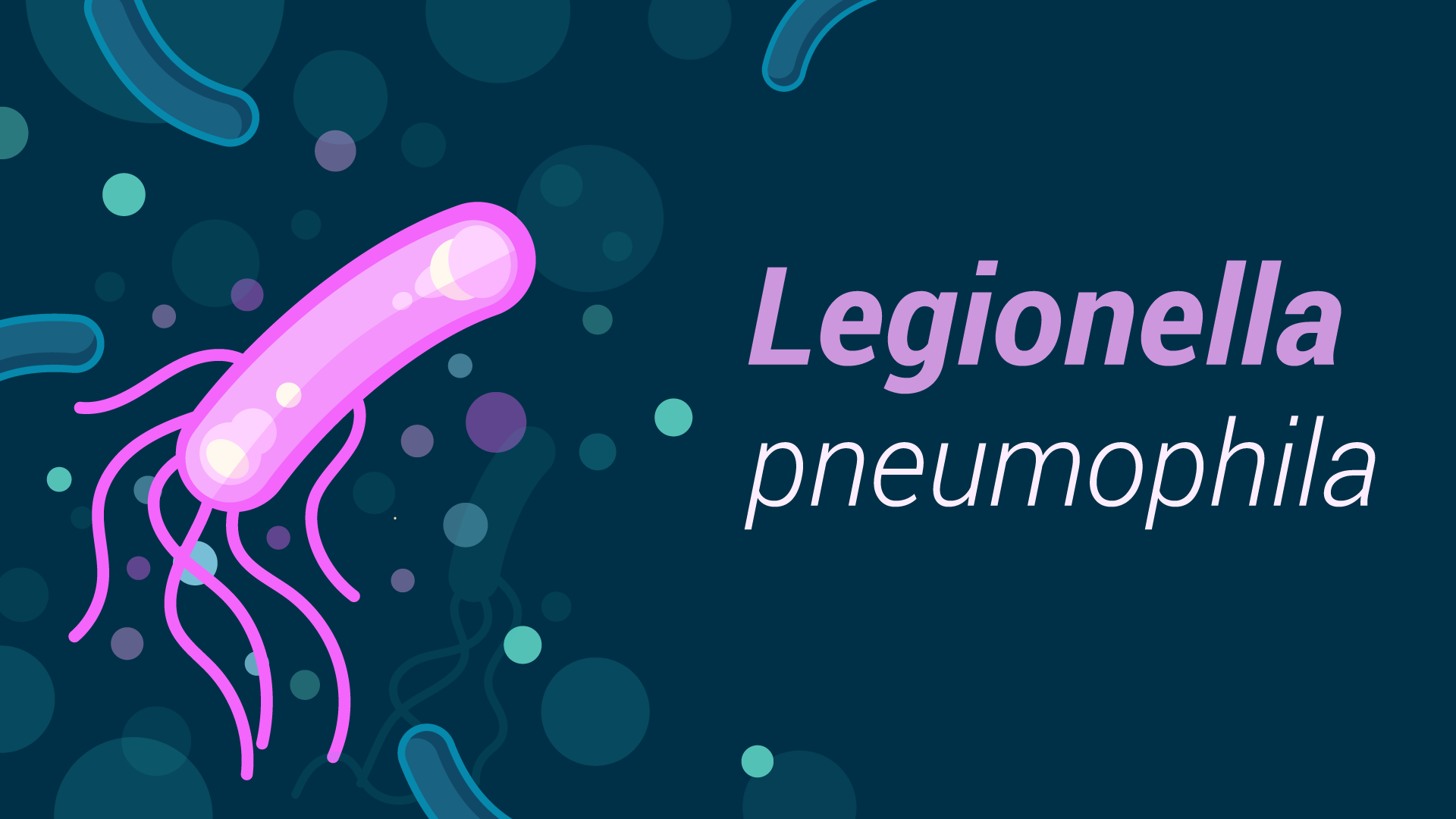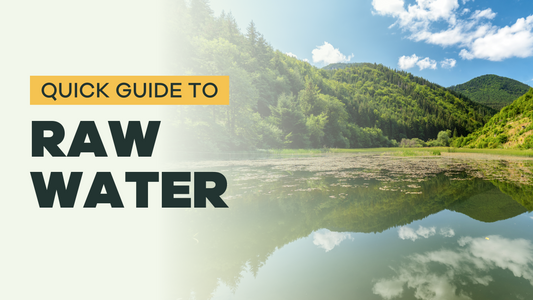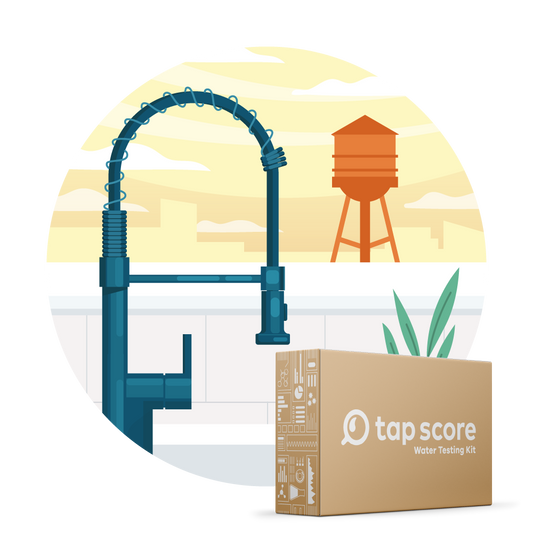7 Pathogens that Contaminate Drinking Water
Our blog is written by real experts— not AI. Each guide is carefully reviewed and updated based on the latest research. Plus, with no affiliate links, you can count on unbiased insights you can trust.
Clean water is vital for our health. So much so, that improved water safety has been credited for increasing life expectancy in the United States by up to 25 years within the past 10 decades.[1] Hard-working municipal water systems and technological advances account for the staggering growth in water safety. Processes like filtering, disinfection, flushing programs, and deposit controls in pipes all improve drinking water quality.
While municipal water systems work hard to make our water safe to drink, it does not always mean that it is 100% free from microorganisms. This is even more true for those not served by a water utility (ie. those who get their water from a private well). Unlike the disinfection processes that occur at utilities, well water is not disinfected at a treatment plant and is far more likely to have potentially dangerous microbial issues.
How Many Bacteria Are in Drinking Water?
There are ~10 million bacteria inside the average glass of water.[2]
While most of these bacteria are harmless, some are definitely not. Below you’ll find a guide to the most common waterborne microorganisms that may be lurking in your water, what they mean for your health, and what you can do about them.
What Is E. coli?
Escherichia coli—more commonly referred to as E. coli—is a type of coliform bacteria that is found in the intestines of warm-blooded animals. E. coli is a large and varied group of bacteria, and most strains are harmless.[3] However, some strains can make you very sick. E. coli can enter the water supply through nearby septic contamination and can indicate fecal-related contamination.
Symptoms of E. coli Infection
If you consume E. coli contaminated water, symptoms typically appear within one to eight days (i.e. the incubation period). As there are a wide array of strains, your health may be impacted in a variety of ways.[4] One of the most common and dangerous waterborne strains of E. coli is E. coli 0157:H7. Symptoms of this strain include:
- Nausea
- Vomiting
- Fever
- Abdominal pain
- Diarrhea
While symptoms can last anywhere between a few days to more than a week, 90% of people who contract E. coli 0157:H7 have a self-limited infection and their outcome is (generally) excellent.[5]
Test Your Water for E. coli Bacteria
Testing for E. coli bacteria is especially recommended for people served by a private well. The presence of E. coli in drinking water suggests that potentially harmful bacteria are entering your water supply and should be addressed immediately.
What Is Hepatitis A?
Inflaming the liver, hepatitis A is a highly contagious virus that affects approximately 25,000 people in the United States each year.[6] Hepatitis A is transmitted when a person ingests the virus via food or contaminated water that contains small amounts of stool from an infected person. The virus can enter into drinking water when the water source is contaminated with feces from infected humans. This can occur via sewage overflows, polluted stormwater runoff, or malfunctioning septic systems.
Symptoms of Hepatitis A Infection
The incubation period for the hepatitis A virus is typically a few weeks, though not everyone who contracts the virus develops symptoms.[7] Those who do show signs may experience:
- Fatigue
- Nausea and vomiting
- Abdominal pain (especially by your liver)
- Clay-colored bowel movements
- Dark urine
- Joint pain
- Jaundice
- Intense itching
While these symptoms generally remain mild and dissipate within a few weeks, hepatitis A infection-related illness may last up to several months.
What Is Legionella?
Legionella is a genus of pathogenic bacterium, including Legionella pneumophila–which can cause Legionnaires’ Disease, a severe (and often lethal) form of pneumonia. [8] The bacterium occurs naturally in freshwater environments, but becomes a serious health concern when it grows and/or spreads in constructed water systems–like plumbing and distribution systems. People contract Legionnaires’ disease if they breathe in (tiny) droplets of contaminated water in the air that contain the bacteria. Typically, the disease is not spread person to person.
Legionella: What You Need to Know
Symptoms of Legionella Infection
It is estimated that each year in the United States, between 10,000 and 18,000 people are infected with Legionella bacteria.[9] Symptoms of the disease typically present as pneumonia and include:
- High fever
- Chills
- Cough
- Headaches
- Diarrhea
A study that examined outbreak survivors in the months following the infection, many showed persistent fatigue (75%), neurologic symptoms (66%), and neuromuscular symptoms (63%).[10]
Test Your Water for Legionella
Legionella bacteria is most frequently found in air-conditioning units, faucets, pools, spas, showers and other water-related devices. Testing for legionella is recommended if someone in your home has contracted Legionnaires’ Disease, as testing may help determine the source of infection.
What Is Salmonella?
Salmonella is a bacterium that typically lives in animal and human intestines, and is spread through oral-fecal contact. The most frequent way humans become infected is through the consumption of contaminated food or water.[11] Water may contain salmonella bacteria when:
- A well has been contaminated with feces from an infected human or animal
- Sewage overflows or septic system malfunction
- Polluted stormwater or agricultural runoff contaminates the water source
Symptoms of Salmonella Infection
Typically, those infected with salmonella bacteria show no signs. However, others may develop symptoms within eight to 72 hours. Possible symptoms include:
- Gastroenteritis
- Nausea
- Vomiting
- Diarrhea
- Fever
- Bloody stool
These symptoms tend to last between two and seven days—although it may take several months before bowels return to normal.[12] Generally, most healthy people recover without specific treatment.
Test Your Water for Salmonella
Testing your drinking water for salmonella is generally suggested for those who have recently contracted a salmonella infection and are also concerned about contamination of their water supply from nearby septic leaks or agricultural runoff.
What Is Campylobacter jejuni?
The Campylobacter organism is a bacterium and Campylobacter jejuni is the species responsible for most cases of human illness. In fact, it is the most common bacterial cause of diarrheal illness in the United States—with almost 1% of the population affected every year.
It can be found in water sources, like private wells, that have been contaminated with feces from infected people or animals. What’s more is that it doesn’t take a large amount of contaminated cells to make you sick. It is thought that consuming fewer than 500 cells can lead to illness.[13]
Symptoms of Campylobacter jejuni Infection
Those infected with Campylobacter jejuni often experience symptoms within two to five days of exposure. While some infected people show no signs at all, most people experience symptoms for about a week. These symptoms include:
- Diarrhea (often bloody)
- Nausea
- Fever
- Abdominal cramps
- Vomiting
Because most Campylobacter infections are self-limiting, they are usually not treated with antibiotics—although antibiotics may help shorten the duration of symptoms.
What Is Giardia lamblia?
Giardia lamblia is a parasite that can be found worldwide and within every part of the United States. However, it is mostly prevalent in areas with very poor sanitation. Once a person consumes Giardia-contaminated water, the parasite lives in his or her intestines and is passed in feces. Millions of Giardia parasites can be released in a single bowel movement and they can survive outside of the body for months due to their protective outer shell.[14]
Giardia can be found in streams and lakes, and their long lifespan in the environment increases the likelihood that they can enter into water systems (including municipal water supplies).
Symptoms of Giardia lamblia Infection
Giardia lamblia causes an intestinal infection—giardiasis—that can be transmitted through consuming contaminated food or water, or through oral-fecal transmission. Symptoms of giardiasis include:
- Watery diarrhea that may alternate with soft, greasy stools
- Fatigue
- Abdominal cramps
- Gas
- Nausea
- Weight loss
These symptoms may last for two to six weeks, but in some people they last far longer or recur. In people whose symptoms clear up, they still may experience intestinal problems well after the parasites are out of their system. While several drugs may be effective against the parasites, not everyone responds to them.
Test Your Water for Giardia
Testing your drinking water for Giardia can be a good way to pinpoint the source of giardiasis infection. However, due to the large water volume required, it can be expensive to test for and is only recommended if you have specific reasons to be concerned about Giardia and Cryptosporidium. See below for tests.
What Is Cryptosporidium?
Commonly known as “Crypto,” Cryptosporidium is a parasite that is protected by an outer shell that allows it to survive outside of the body for an extended period of time. The shell also makes it very resistant to chlorine disinfection. Due to its resilience, Crypto is most commonly spread in water (both drinking water and recreational water) making it the leading cause of waterborne disease among humans in the United States.[15]
Symptoms of Cryptosporidium Infection
Crypto causes a diarrheal disease—cryptosporidiosis—which can be long lasting. While some people who drink Cryptosporidium-contaminated water show no symptoms at all, others may see symptoms on and off for more than 30 days. Symptoms of cryptosporidiosis include:
- Watery diarrhea
- Stomach cramps or pain
- Dehydration
- Nausea
- Vomiting
- Fever
- Weight loss
Test Your Water for Cryptosporidium
Similar to Giardia, the large water volume required makes Cryptosporidium testing expensive and is only recommended if you have specific reasons to be concerned about crypto or giardia contamination.
A Final Word On Microbes in Drinking Water
While this list covers a few potential, dangerous microorganisms in your drinking water, it is important to remember that your tap water is (generally) safe. Public water utilities work hard to ensure that dangerous bacteria, algae, fungus, and other microbes are not only removed from the supply, but also gets treated with enough disinfecting power to address any pathogens downstream.
While bacterial issues in city water are rare, if you get your water from a private well, spring, any other non-utility source, or are traveling, you may be at higher risk for encountering waterborne microbes.
Can Charcoal Filters Remove Bacteria and Viruses?
Charcoal, or activated carbon, filters are typically not effective in removing bacteria and viruses. And, in fact, they are generally not recommended for use with water that has a chance of being contaminated with bacteria or viruses.
If you are concerned your water has microbial issues, Tap Score can help. Take a look at the Microbiology Water Testing Collection for an array of specialized laboratory tests designed to provide fast, high-precision, and accurate results.
Read More
▾Sources and References
▾- There Are Many Waterborne Pathogens Such as Legionella
- Researchers reveal a glass of drinking water contains 10M bacteria
- E. coli (Escherichia coli) | E. coli
- The Who’s Who of E. coli Strains
- Is E. coli Infection Contagious? Signs, Symptoms, Treatments & Causes
- Hepatitis A Q&As for Health Professionals
- Hepatitis A - Symptoms and causes
- Legionnaires Disease History, Burden, and Trends
- What Is Legionnaires' Disease
- Health-related quality of life and posttraumatic stress disorder among survivors of an outbreak of Legionnaires disease
- Salmonella and Drinking Water from Private Wells | Wells | Private Water Systems | Drinking Water | Healthy Water
- Salmonella infection - Symptoms and causes
- Campylobacter — Safe Drinking Water Foundation
- Giardia and Drinking Water from Private Wells | Wells | Private Water Systems | Drinking Water | Healthy Water
- Parasites - Cryptosporidium (also known as "Crypto") | Cryptosporidium | Parasites















